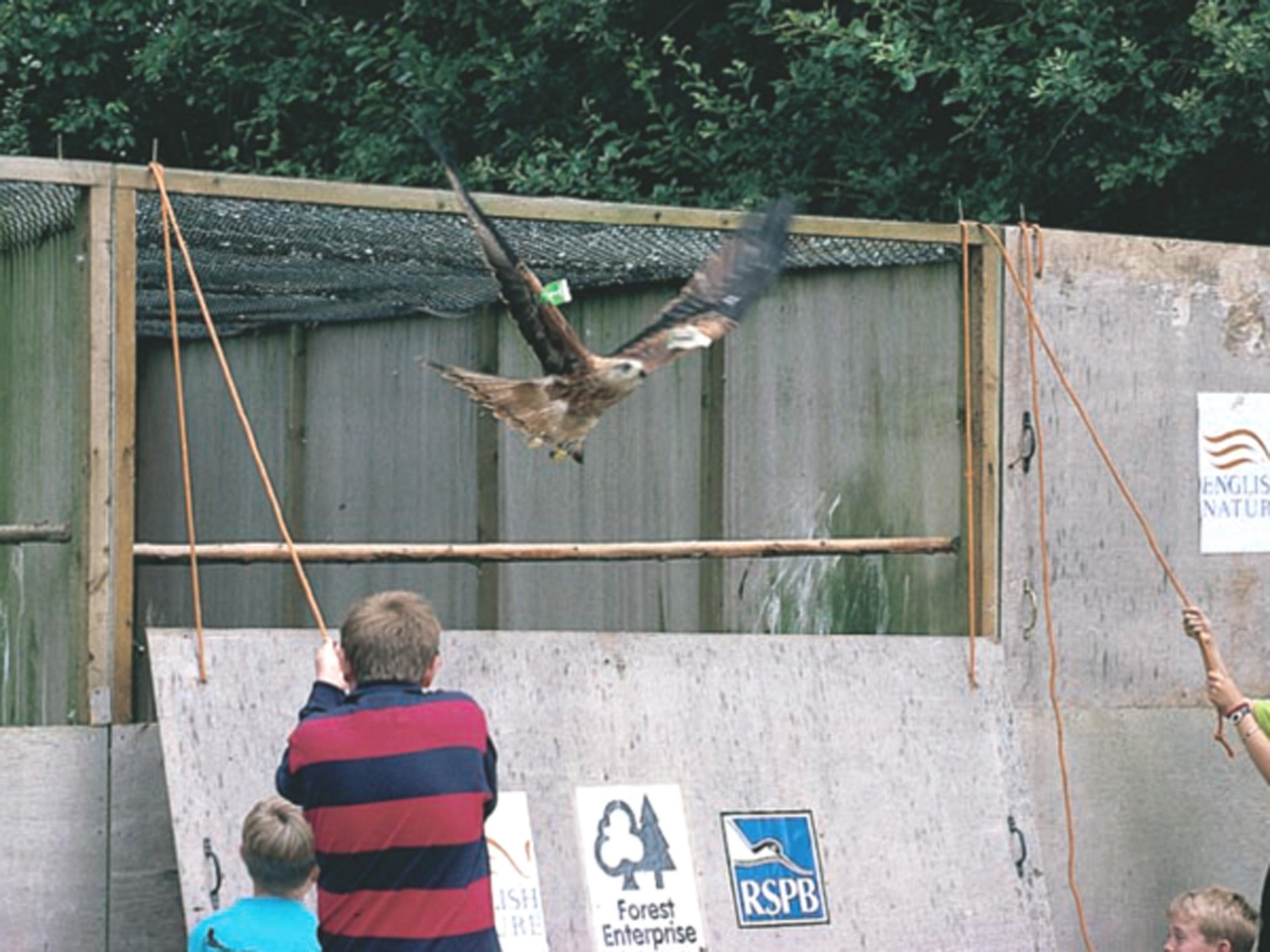Red kite reintroduction ‘might be biggest species success story in UK conservation history’
Thousands of breeding pairs now soar above countryside

Your support helps us to tell the story
From reproductive rights to climate change to Big Tech, The Independent is on the ground when the story is developing. Whether it's investigating the financials of Elon Musk's pro-Trump PAC or producing our latest documentary, 'The A Word', which shines a light on the American women fighting for reproductive rights, we know how important it is to parse out the facts from the messaging.
At such a critical moment in US history, we need reporters on the ground. Your donation allows us to keep sending journalists to speak to both sides of the story.
The Independent is trusted by Americans across the entire political spectrum. And unlike many other quality news outlets, we choose not to lock Americans out of our reporting and analysis with paywalls. We believe quality journalism should be available to everyone, paid for by those who can afford it.
Your support makes all the difference.The red kite reintroduction scheme may be the biggest species success story in UK conservation history, according to environmental experts.
The “triumphant comeback” of the bird of prey now sees thousands of breeding pairs soaring above the UK – especially over the Chilterns, southeast, Yorkshire and the midlands – 30 years on from the start of the scheme to bring them back to England.
Danny Heptinstall, a senior international biodiversity adviser at the Joint Nature Conservation Committee, said: “In 1990, the UK had only a few dozen red kites; 30 years later there are over 10,000.”
The once-vanished species were common city scavengers, feeding on carrion and worms in medieval London.
Their distinctive forked-tail silhouette caught the eye of Shakespeare, who wrote about them in Coriolanus and The Winter’s Tale.
However, red kites were extinct in both England and Scotland by the 20th century, thanks to them being killed as vermin, the taxidermy trade and egg collecting.
A small population remained in Wales but it was neither substantial nor healthy enough to recolonise the rest of the UK, even once the species was protected.
In a reintroduction scheme that was seen as “radical” at the time, 13 young red kites from Spain were released in the Chilterns Area of Outstanding Natural Beauty, on the border of Buckinghamshire and Oxfordshire, in July 1990.
Meanwhile, a similar scheme started in Scotland, followed by further reintroductions in both countries.
The birds first successfully bred in 1992 and at least 37 pairs had bred in southern England by 1996.

Natural England chair Tony Juniper said the red kite stands out as a true conservation success story.
He said: “Red kites are one of our most majestic birds of prey with a beautiful plumage, and are easily recognisable thanks to their soaring flight and mewing call.
“Persecuted to near-extinction, they have made a triumphant comeback in England over the past three decades.”
Jeff Knott, the RSPB’s operations director for central and eastern England, said: “In the 1980s, anyone wanting to see a red kite had to make a special pilgrimage to a handful of sites.
“Today it is a daily sight for millions of people.
“In a few short decades we have taken a species from the brink of extinction to the UK being home to almost 10 per cent of the entire world population.
“It might be the biggest species success story in UK conservation history.”
Join our commenting forum
Join thought-provoking conversations, follow other Independent readers and see their replies
Comments